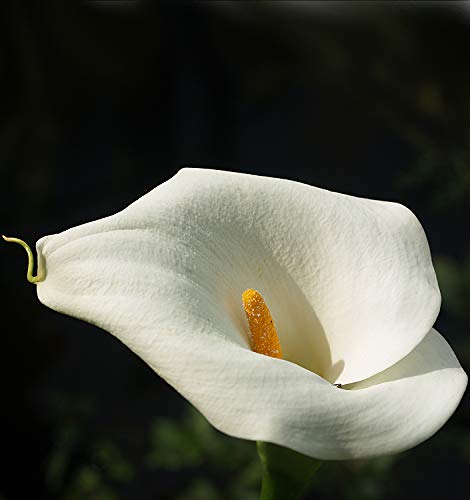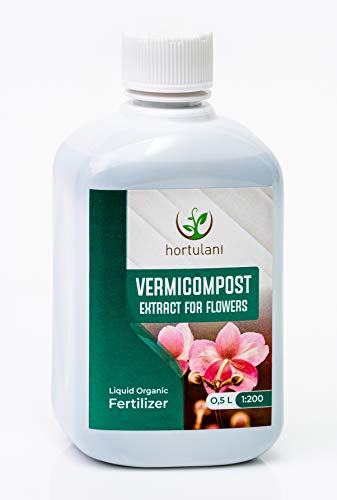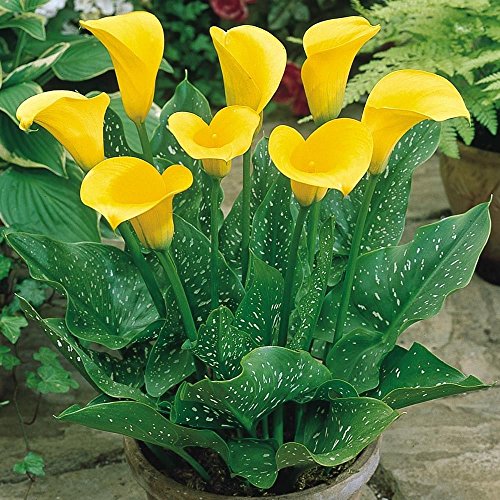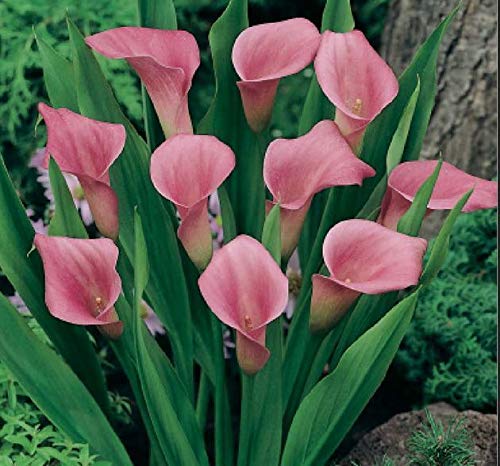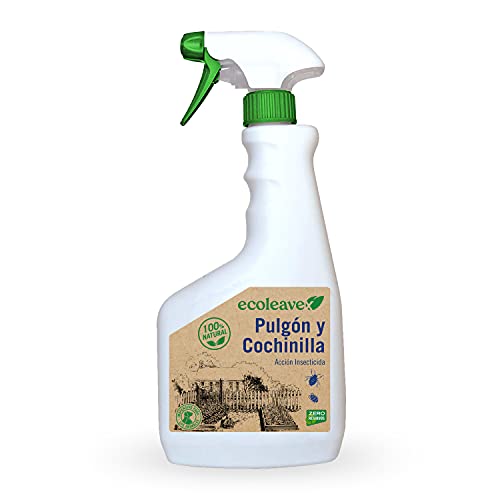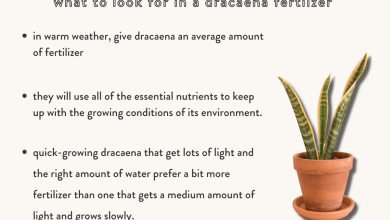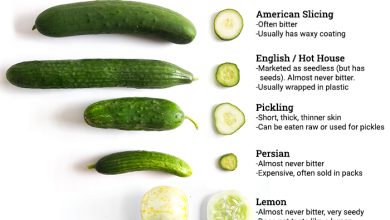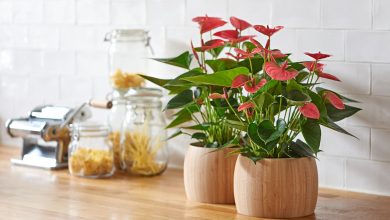Callas Care: [Earth, Strengthening, Humidity and Pruning]
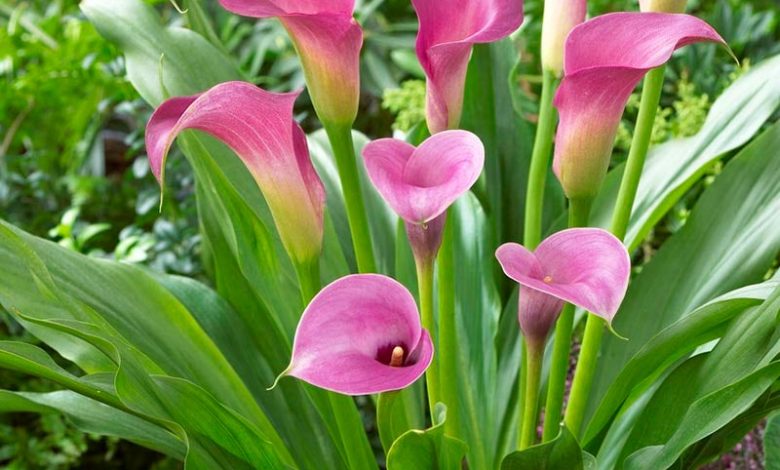
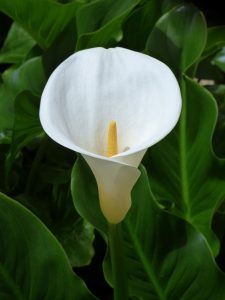 Calla lily or Zantedeschia aethiopica is a plant of South African origin widely naturalized in various countries.
Calla lily or Zantedeschia aethiopica is a plant of South African origin widely naturalized in various countries.
In fact, it is known in other regions with the common names of water lily, cartridge, alcatraz, duck flower, among others.
This specimen is generally cultivated as an ornamental plant or as a cut plant due to the elegant and attractive appearance of its spathes.
If you are interested in growing it, we invite you to review this guide in which we include the main care of coves. We hope you find it useful.
What land needs do coves have?
Calla lilies are plants that need a well-drained soil that is low in organic matter, as is the case with clay-loam soil, as it retains the necessary moisture to meet the needs of the plants without becoming saturated.
The porosity of the soil is also important and it is suggested that it has a percentage of 40 and 60%. Regarding electrical conductivity, it should be less than 1.5 dS/m and the pH should range between 5.5 and 6.
Some growers use a mix of vermicompost with sand and perlite, or make a combination of compost, humus, gravel, and black soil. Any substrate is suitable as long as it is not heavy or high in organic matter.
How to make coves grow strong and vigorous?
The also called alcatraces are plants that need specific care. Below we share some aspects that you should consider so that your coves grow strong and vigorous.
climate and temperature
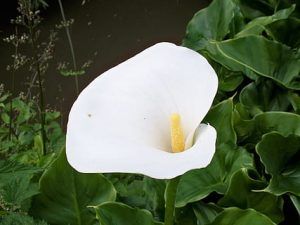 The coves are native to temperate and cold zones. In fact, they grow best at temperatures between 16 to 22°C, so they are not very tolerant to heat.
The coves are native to temperate and cold zones. In fact, they grow best at temperatures between 16 to 22°C, so they are not very tolerant to heat.
Although they adapt to the cold, strong frosts can cause damage, so it is necessary to protect them from temperatures below 5°C.
Lightning
To obtain high quality flowers, it is necessary to place them in a well-lit place and this is mainly applicable to the case of colored hybrids. An average of 2.7 lumens per square centimeter is recommended and the shade should never be greater than 67%.
Fertilization
The application of fertilizers is recommended from the transplant of the alcatraz. The formula must be composed of nitrogen, potassium and phosphorus. It is suggested to apply 14.1 g/m 2 of the 12-10-10 formula twice a week. Likewise, liquid fertilizer can be applied weekly.
In the case of cultivation in pots of 14 or 15 centimeters in diameter, slow-release fertilizers such as 15-3-15 with calcium, magnesium and minor elements can be applied at a dose of 1.5 grams per pot.
What humidity do coves need?
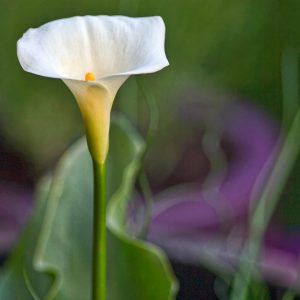 The irrigation for the cove depends on the age of the plant as well as the prevailing climate in the area.
The irrigation for the cove depends on the age of the plant as well as the prevailing climate in the area.
As a guideline, it is suggested to water about 1 liter daily in the morning, then reduce the frequency to every third or fourth day.
Also, the amount and frequency of irrigation is not the same throughout the year. As such, it should be abundant throughout the flowering period and should taper off towards fall.
On the other hand, during the summer it is necessary to carry out light and frequent irrigations due to the high temperatures of the season, while in the winter both the frequency and the quantity must be reduced.
Regarding relative humidity, it should remain above 60%, avoiding the combination of high levels (80-85%) with high temperatures in order to prevent disease attacks.
Is it necessary to prune the coves?
Pruning is not essential calla lily care. In fact, it is only recommended to cut the basal leaves or flowers as soon as they wither or are damaged. This practice not only protects the plant from diseases, but also allows new leaves and flowers to sprout.
How often should we prune the coves?
Calla lilies should be pruned whenever necessary, but it is important to do so after flowering to allow the plants to sprout again the following season.
In the case of commercial crops, the harvest should start from 11 to 15 months when the plant reaches the thickness and height suitable for sale. It is suggested to do it manually, cutting the stem with disinfected tools and applying a bactericide to the cuts.
How to prevent pests and diseases from appearing in coves?
One of the best ways in which pests and diseases can be prevented from appearing in creeks is to take care of the parameters of the soil and the level of humidity. This is important since saturation leaves the plant exposed to infections caused by bacteria, fungi, viruses and nematodes.
To prevent these problems, good hygiene practices must be implemented in cultivation, the use of clean water, the use of healthy and disinfected bulbs, in addition to using a suitable substrate for cultivation.
In the event that the plant presents spots, dots or rot on the roots or stems, it will be urgent to eliminate the diseased plants and apply antibiotic products such as treptomycin and tetracyclines.
Regarding pests, among the most common are aphids, thrips, red spider, snails, slugs and beetles. As a measure, it is recommended to spray every 3 weeks, once flowering has finished.
Conclusions
As has been seen, caring for coves is relatively simple, since it is mainly based on managing humidity, lighting and the composition of the substrate. However, there are some other measures that we can consider to obtain a successful crop.
If you want to know more information about the cultivation of coves, or any other plant, we invite you to consult the related articles on our blog.
Bibliographic references
- https://en.wikipedia.org/wiki/Zantedeschia_aethiopica
- https://xdoc.mx/documents/guia-basica-del-cultivo-de-alcatraz-zantedeschia-sp-y-5c686e2b22e55#
- Production manual for poinsettia and ornamental plantshttps://www.fps.org.mx › 30-grains-and-flowers › do…
- http://repositorio.uaaan.mx:8080/xmlui/bitstream/handle/123456789/42368/MA.%20DEL%20CONSUELO%20MACIAS%20ESQUIVEL.pdf?sequence=1
- http://dspace.utb.edu.ec/bitstream/handle/49000/998/T-UTB-FACIAG-AGR-000194.pdf?sequence=1&isAllowed=y
- http://www.dspace.uce.edu.ec/bitstream/25000/7431/1/T-UCE-0004-47.pdf

